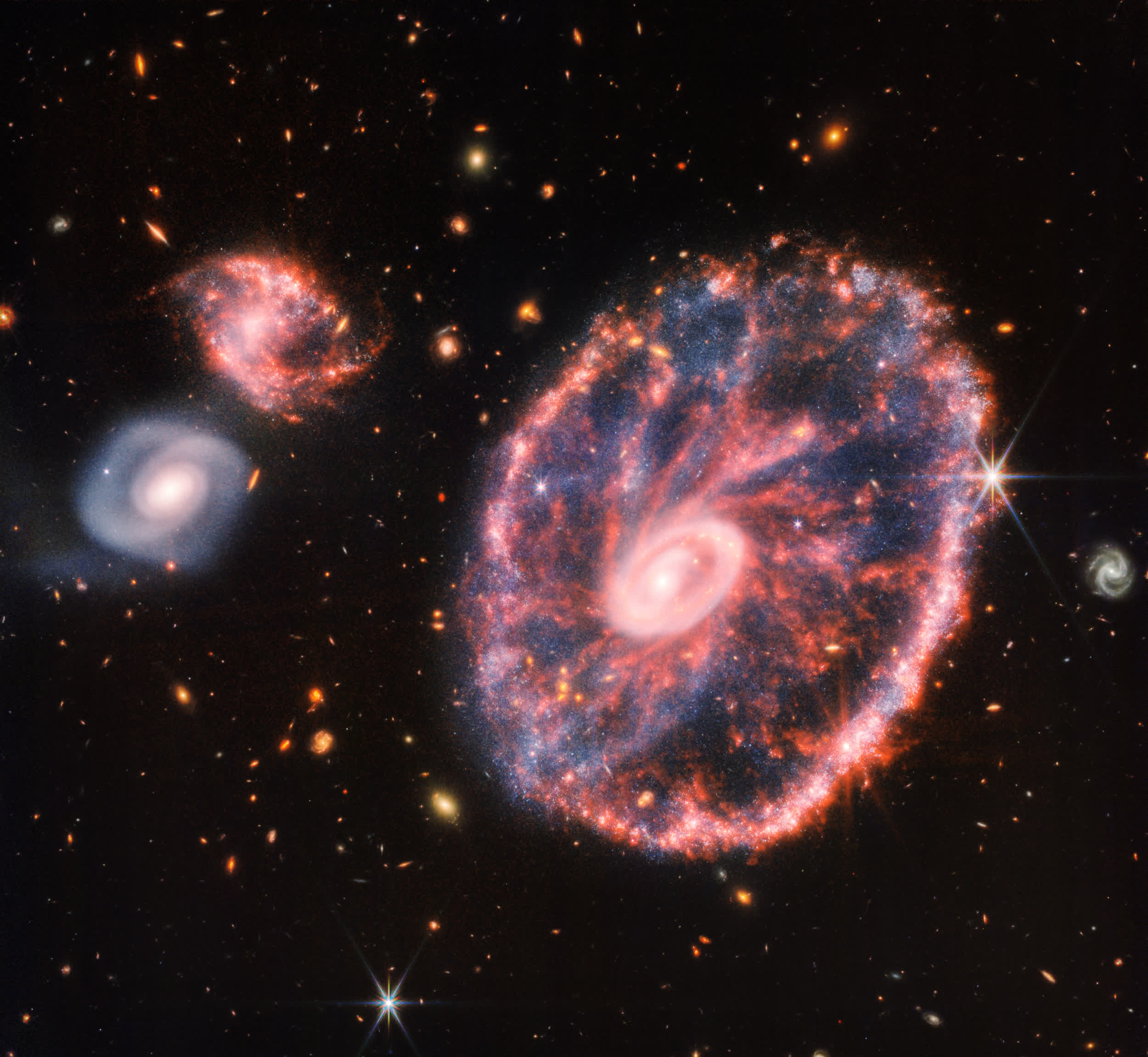What just happened? It's been less than a month since NASA released the first science data from the James Webb Space Telescope. Now that we've had time to soak in that incredible imagery, NASA has hit us with a new image set that again highlights how advanced Webb is compared to its predecessor.
The above image is a composite of the Cartwheel Galaxy from Webb's Near-Infrared Camera (NIRCam) and Mid-Infrared Instrument (MIRI). The galaxy is located around 500 million light-years away in the Sculptor constellation and is the result of a collision between a large spiral galaxy and a smaller galaxy. Here, it is flanked by two smaller companion galaxies against a backdrop of many others.
NASA said the bright center contains an enormous amount hot dust, and that the brightest areas are young star clusters. The outer ring of the galaxy has been expanding for about 440 million years and is roughly 1.5 times the size of our own Milky Way galaxy. As the ring swells, it collides with surrounding gas which triggers additional star formation.
NASA and the European Space Agency (ESA) previously imaged the Cartwheel Galaxy using the Hubble Space Telescope. Data from that observation was reprocessed in 2010 to bring out more detail in the image, but it still pales in comparison to what Webb was able to see using its cutting-edge instruments.
The blue, orange and yellow colors in the composite are elements from the NIRCam. NASA said the individual blue dots are stars or pockets of star formation. The shades of red from the MIRI reveal areas that are rich in hydrocarbons and other chemical compounds like silicate dust. It is these regions that make up the spiraling "skeleton" spokes of the galaxy.
The first batch of images from Webb included a look at the Southern Ring Nebula, Stephan's Quintet, the Carina Nebula, spectrum data from a giant exoplanet, and a stunning deep field observation.
Webb's latest observation is further evidence that the galaxy is in a transitory stage and will continue to evolve in the future.

